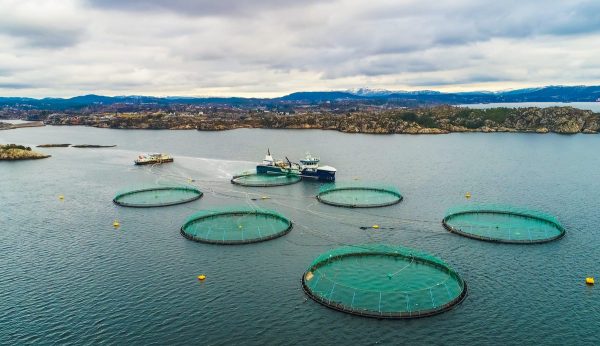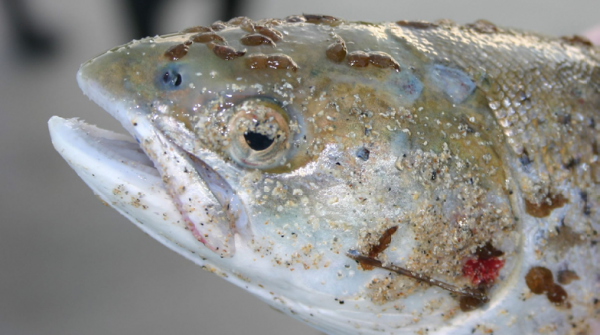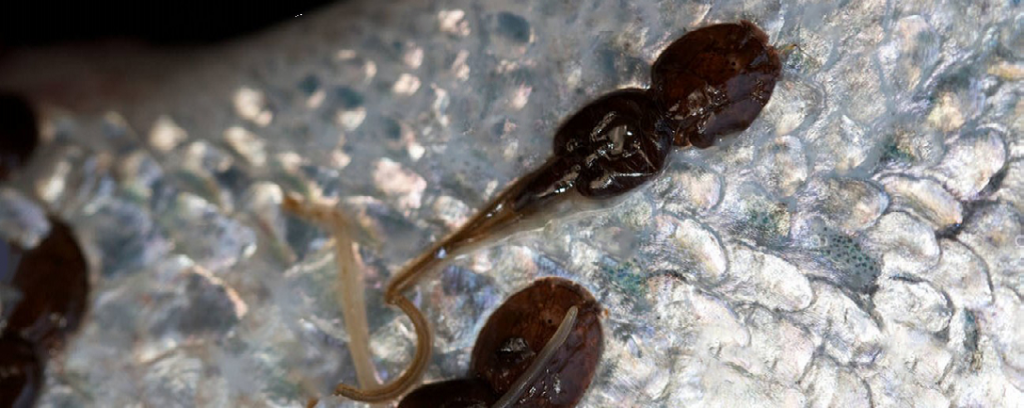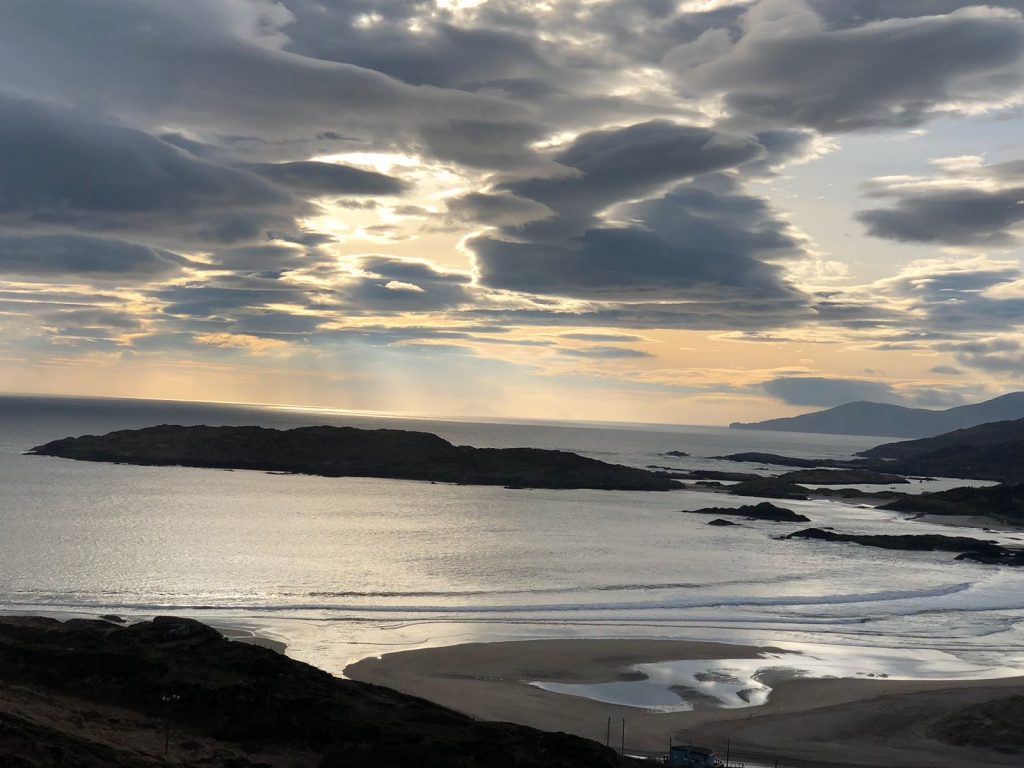Salmon Farming Ireland
Salmon Farming in Ireland
The advent of salmon farming in the late 1980’s in Ireland gave rise to much debate. The negative effects that this new type of practice might have on our coastal marine environment was a source of much debate.
Unfortunately the most visible consequence was observed almost immediately. A strange and unexpected premature sea trout migration back to freshwater took place in areas where salmon farming was being carried out. These fish were early returnees. The fish had within a few weeks of their outward migration as smolts or kelts returned in large numbers. They all presented with varying degrees of injury and infection through damage caused by sea lice.
Adults and finnock (immature fish at sea) were equally affected with the common denominator being their closeness to salmon farms. The number of sea lice attached to these wild fish far exceeded what would normally be expected in wild fish.

Open Net Pen Salmon Farming. Outdated technology and outdated thinking. Wild Salmon and Sea Trout are being destroyed by this industry
Early Research and Scientific Consensus
The first wide scale research into the effects of sea lice in Ireland was published by the Department of the Marine in the Sea Trout Working Group Report of 1992. If one was to fast forward to today it might surprise many people that we are still arguing whether sea lice emanating from salmon farm facilities cause harm to wild salmonid stocks.
This is a period of over 33 years during which the sea lice issue has been researched on a continuous basis. Research by national and international regularity bodies, universities, independent scientists and indeed the aquaculture industry, have in the main been negative. The overall scientific consensus is that sea lice from aquaculture facilities have a devastating effect on wild salmonids.
Ireland's Salmon Farming Industry Today
The current situation in Ireland, as gleaned from the recent Joint Oireachtas hearing into Aquaculture Licensing records, is that there are 38 licensed facilities to rear fin fish which are located from West Cork to Donegal. Production figures in 2024 note a total of fourteen thousand tonnes. During the period from late 80's to today, there has been a substantial increase in the value of Irish farmed salmon with the value in Ireland breaking the €100m barrier. Indeed the price per kg is substantially higher than both Scotland and Norway.
International Context
In an international context, Ireland (14,000 tonnes in 2024) is a very small player within the industry and is dwarfed by Scotland (over 200,000 tonnes) and Norway (1.2 million tonnes). Both Scotland and Norway have been relatively static in their production over the last number of years.
Both countries are experiencing capacity problems as a consequence of large scale environmental problems. Coastal waters in both countries are increasingly affected by compromised water quality, disease and parasites. These negative effects are becoming more prevalent due to the large acreage occupied by traditional open-net aquaculture facilities.
Norway has recently reduced the amount of new licences in aquaculture regions in Norway. Development licences “Green Licences” are being issued in small numbers which focus on technologies promoting methods that can help solve environmental and acreage challenges facing their aquaculture sector.
The Legal and Environmental Aspects of Salmon Farming
Ireland's Fish Farming Future Expansion
Scientific studies have linked salmon aquaculture to reduced wild salmon survival and indeed an extinction for sea trout in aquaculture regions in Ireland and internationally. However official policy is to increase salmon farming production into the future.
This will be achieved by a combination of issuing new licences and amendments to existing licences. Truthfully the industry has only been stopped from expanding to date by virtue of various NGO bodies relying on European law.
EU Habitat's Directive Judgement
One of the biggest obstacles to expansion of the industry came about due to a decision by the European Court of Justice in 2007, when a negative judgement against Ireland was handed down for breaches of the EU Birds and Habitats Directives in relation to Natura 2000 sites (Special Areas of Conservation (SAC) & Special Protection Areas (SPA).
Marine Natura Sites
There are 71 marine Natura sites in Ireland (where the majority of aquaculture takes place) and the main focus of the judgement related to the failure of the State to put in place a system for data collection, definition of scientific interests and adequate assessment of aquaculture licence applications in the Natura 2000 areas.
National legislation was put in place to protect existing licences in these Natura sites so that the aquaculture facilities could continue while negotiations were conducted with EU authorities to ensure compliance with the Birds and Habitats Directives.
The process has been concluded and Appropriate Assessments have been conducted in relation to the majority of Marine Natura sites. This process appears to have given the green light for renewal of licences and the inevitable expansion of the industry in these protected sites.
A More Dangerous Industry
Has the situation changed from those early days in the 1980s?
The simple answer is no; we still have the same arguments regarding sea lice but now we have so many more problems with disease and increased escapement of farmed salmon.
All this, and the associated warming of the seas around Ireland’s west coast, means we now have an industry which is much more harmful than ever before and is, in essence, an industry which cannot be sustained if Ireland is to preserve its wild salmon and sea trout stocks.The salmon farming industry has by its very nature caused environmental compromise to the marine environment and certainly damaged wild salmonids.
Regulatory System Aquaculture
The salmon farming in Ireland regulatory regime is not remotely robust enough, with protocols and guidelines being relied upon to control the industry. The inspection regime in regard to fish health and the monitoring of sea lice levels is carried out by the Marine Institute.
The Department of Agriculture, Food & the Marine (DAFM) through its Marine Engineering division is responsible for the inspection of infrastructure associated within the industry. These inspections, while welcome, are inadequate to control the negative consequences of open net pen farming.



